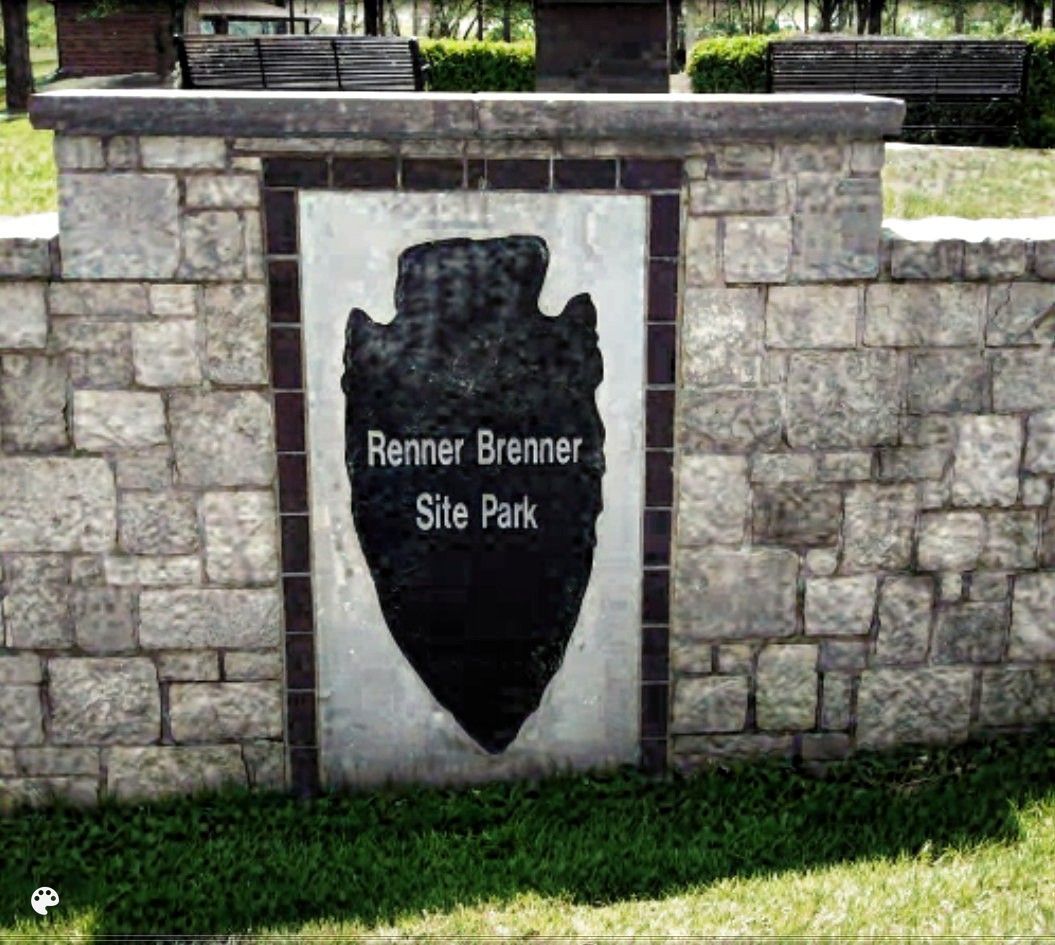JAMES METT SHIPPEE
Shippee was born March 6, 1896 and became a WW1 Navy veteran where he had studied drafting and by trade would became a millwright. By the age of 15, he had already become an amateur collector of prehistoric artifacts in and around his free time. He adapted the unusual respect of recording everything, from his draftsman training, which separated him from the casual treasure hunter into the scientific field where most professionals had not attempted that kind of detail.
In 1923, at the age of 27, Mett was walking past the Renner home on his way to Parkville where he noticed the freshly plowed field. In that instant, he realized the value of what he saw and ultimately would open the Kansas City area to national attention. This was not only true with the Renner site, but others nearby as well. He essentially had just become the grand father of Kansas City archaeology. It should be pointed out that Shippee had walked this same road several other times over the previous few years because we know that he reported his first excavations into the Renner mound to Wedel (1937), occurred in 1920.
In 1937 The Great Lakes Pipeline Company ran a set of large lines through the Renner site. They have about a 25' easement. At this same time, Vivion road was being constructed where the old road was on the east side of the site. There are some published notes I'll try to find where Shippee discusses his attempts at salvaging what he could during that. Almost nothing of the pipelines and road work are mentioned in Wedel's report.
He became good friends with the Renner's and welcomed him to "study". On another trip, he would sketch what he saw which would become invaluable in the future.
That same year he was allowed to do four text excavations along the north fence of the chicken yard. Based on his findings, he immediately sent a letter to the National Museum (now known as the Smithsonian Institute), to Dr. Waldo Wedel pleading him to come investigate. Over the subsequent years, he actually sent several before Wedel responded.
Wedel would not make it for 14 more years, until the summer of 1937.
Mett and Margaret at Renner 1937

Mr. Shippee, a millwright, became an amateur archaeology in 1915, at the age of 19. He opened the Kansas City area to national attention on Indian studies.
Archaeologists from the Smithsonian Institute came to Kansas City in 1937 to look into the enormous wealth of Indian material that lay in every direction from the confluence of the Kansas and Missouri rivers. They not only found a treasure of artifacts but they found Mr. Shippee.
The Northlander guided them in their search and excelled in the field so well that he went on become one of them. For the next 40 years, he was to work the length of the Missouri River Valley from Illinois to the Northwest for the [Smithsonian] Institute and the University of Missouri.
A World War I Navy veteran, Mr. Shippee credited one of his finest moments with a ceremony in 1983 in which Park College presented him an honorary doctorate degree in science. He had never received a college degree but had earned his way with his collegues in archaeology through his years in the field, his discoveries and contributions to archaeology.
Mr. Shippee arrived in Kasnsas City in 1907 at the age of 11. He was born March 6, 1896, in Greenleaf, Kansas. Kansas City depended on Mr. Shippee for much of the work that brought the Hopewell Museum (no longer maintained by the county) and Indian archaeological digging site to Line Creek Park. Mr. Shippee had discovered a significant number of artifacts at the site during the 1930s. Bulldozers ripped through the site to install sewer lines and some of the site was salvaged, some lost, and a portion eventually protected.
In 1921, at the age of 25, he was walking from his home in Gladstone to Parkville. At that time the only road from there to Parkville, happened to go through what would become the Renner-Brenner Park. Back then, it was only a freshly plowed field for the first or maybe the second time. His unique eye saw the abundance of material turned up by the recent plowing and sought permission to make a map of what he saw. At that same time Vivion Road was under construction and it plowed right through the heart of the sitel
That same summer, Carolina Brenner and Leslie Renner were married and just had their new house built, which is still there on the south end of the Renner-Brenner park. Mett asked the newlyweds if he could excavate an area. Mr. Renner was hesitant, but they agreed to allow Mett to excavate in the chicken yard (where the current gazebo now stands).
That summer, Mett excavated 4, 5 foot square grids to a depth of about four feet which was the first excavation ever attempted. What seemnd like a simple excavation for a 25 year old amateur, turned out to be one of the most amazing discoveries in the Kansas City area.
Through his simple excavation, he was able to draw a conclusion the Renner farm was connected with the mounds. He also concluded the farm was once a village. That summer, he further investigated the remaining known mounds on the west side of the village on the bluffs.
Realizing he had literally stumbled upon something incredibly important, he sent a letter to the National Museum (now known as the Smithsonian Institute) for help.
After several communications, it would be nearly 15 years before Waldo Wedel from the National Museum, would bring his team to the Renner Farm where Shippee and Wedel would become good friend.
During those 15 years, Mett continued to surface collect all over the KC area as well as discovering the significance of the the future Line Creek Park as well as many other areas.
SHIPPEE'S MAP
This is a copy of a map Shippee created in 1954. He allowed me to copy it. I later drew some notes on it. It's significant in that it's the only report I know of, of his work in the earlier 1930's regarding the pipeline. The top left notes are the profile he made of the pipeline ditch. There are other notes he made on this same map before any excavations where he noted: large concentrations of rock, area of refuse and more. It also shows excavations made by other's not reported in any other place or map.
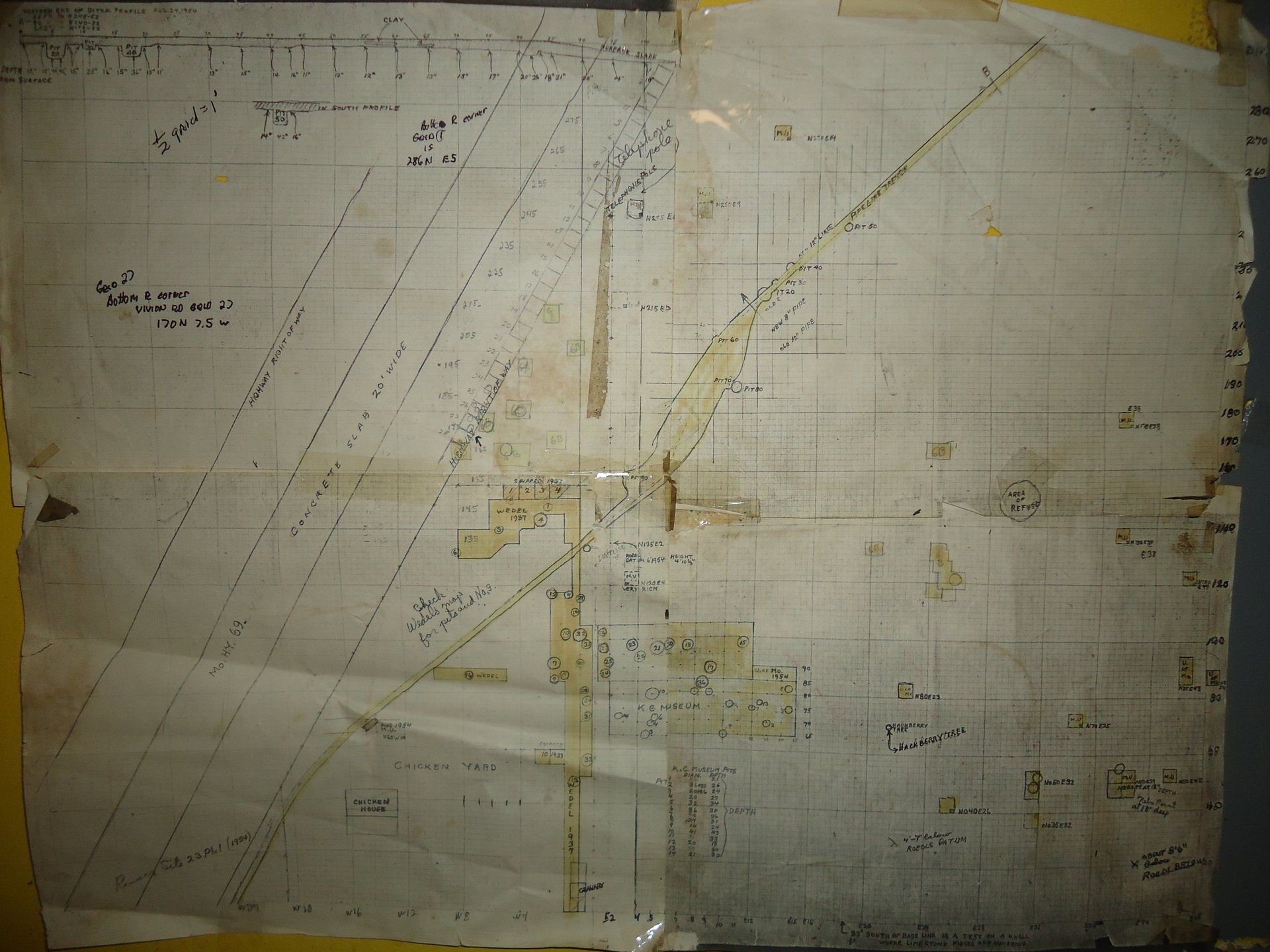
Letter from Shippee to Wedel in 1937
This was five months after Wedel's excavation at the Renner site and where Shippee likely was never able to discuss what he knew during Wedel's visit and eventually put it in writing. He drew his work on the Renner mound along with his findings there.
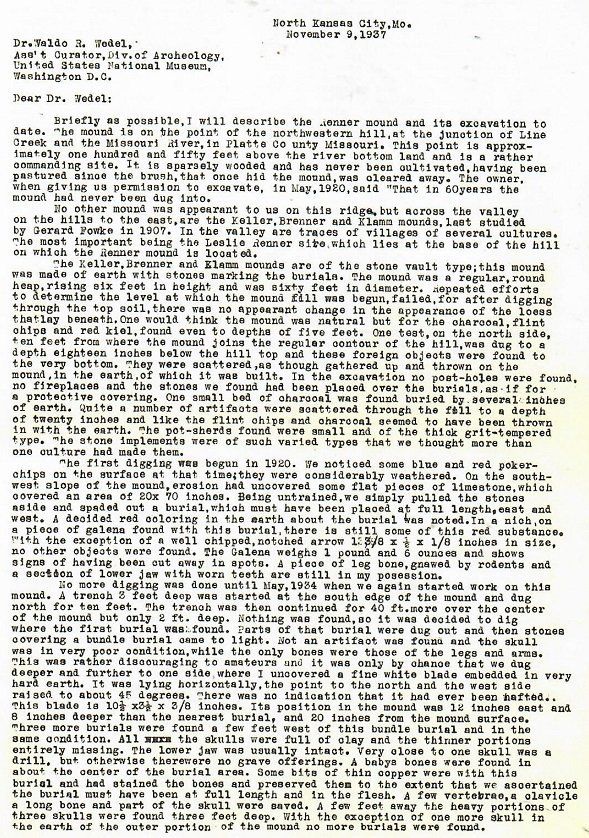
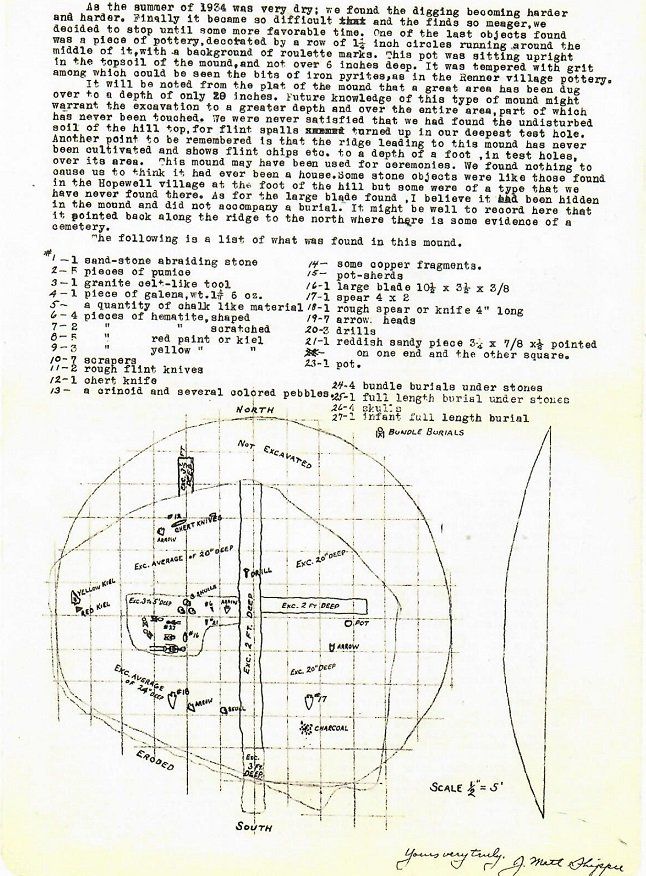
Shippee letter to Wedel, 1940
Apparently Wedel had asked Shippee for information regarding the Brenner and Keller mound groups.
This is now three years after Wedel's Renner site excavations and it become clear in this letter the two had become good friends as in Shippee's honest humor addressing Wedel, "Dear Doc."
It shows is desperate attempts to find any literature and notes on the mounds. It's doubtful it was an attempt to impress Wedel, but was his attempt at finding everything he could and share it.
Page 2, shows his frustration in figuring out where prior excavators dug and in what mound and where he began to assemble his own map.
Page 3, shows his drawing of the Brenner and Keller mound groups as he knew at the time and a outline of a blade found in Liberty.
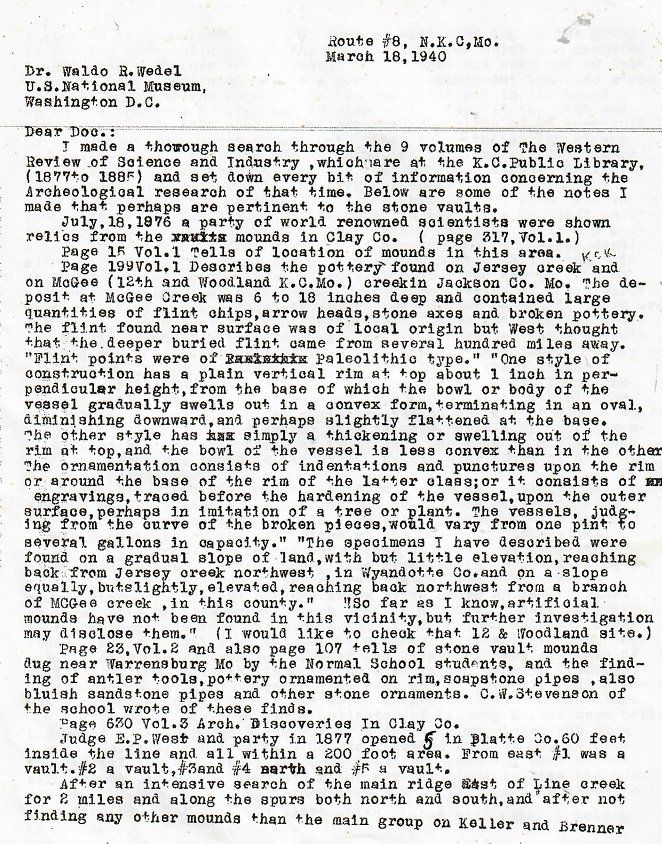
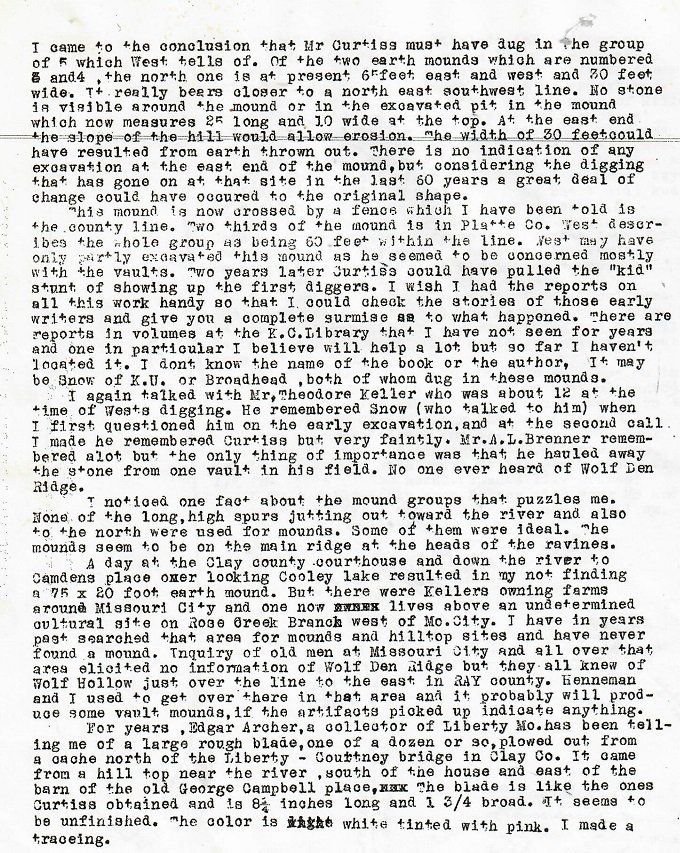
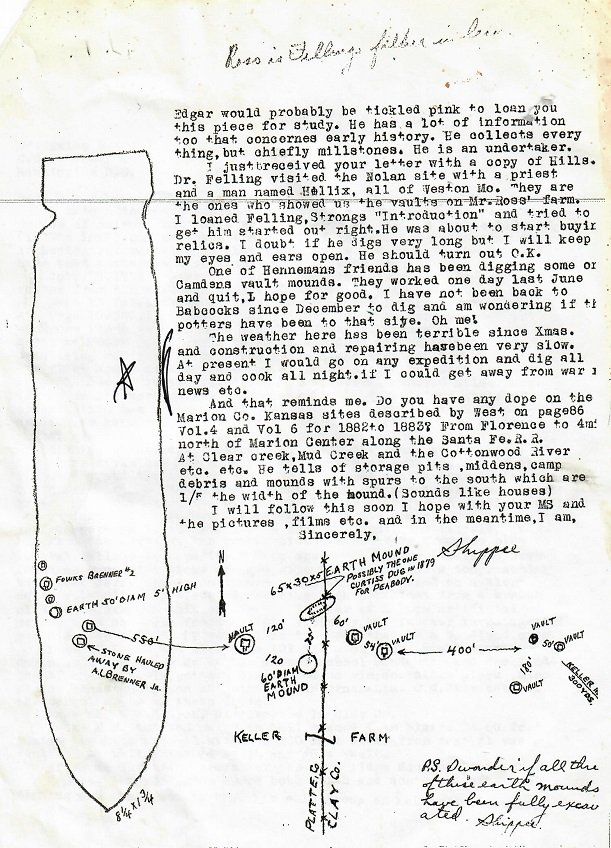
Shippee's 1947 Map of Riverside's Sites
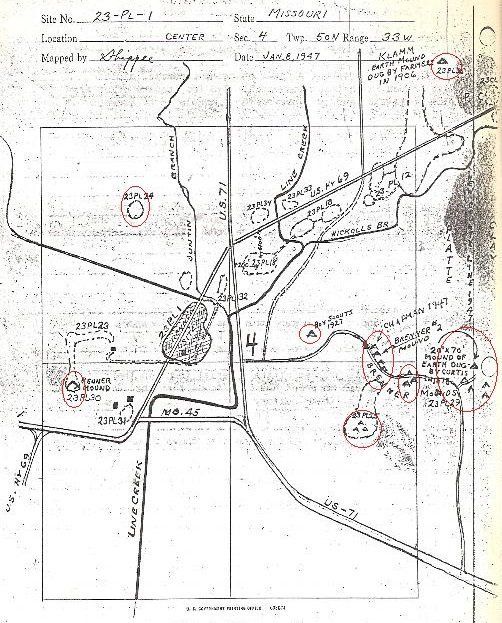
This is a pre 1985 map of all excavations up to that time where the items highlighted in red were from Shipppe's field notes on his first visits.
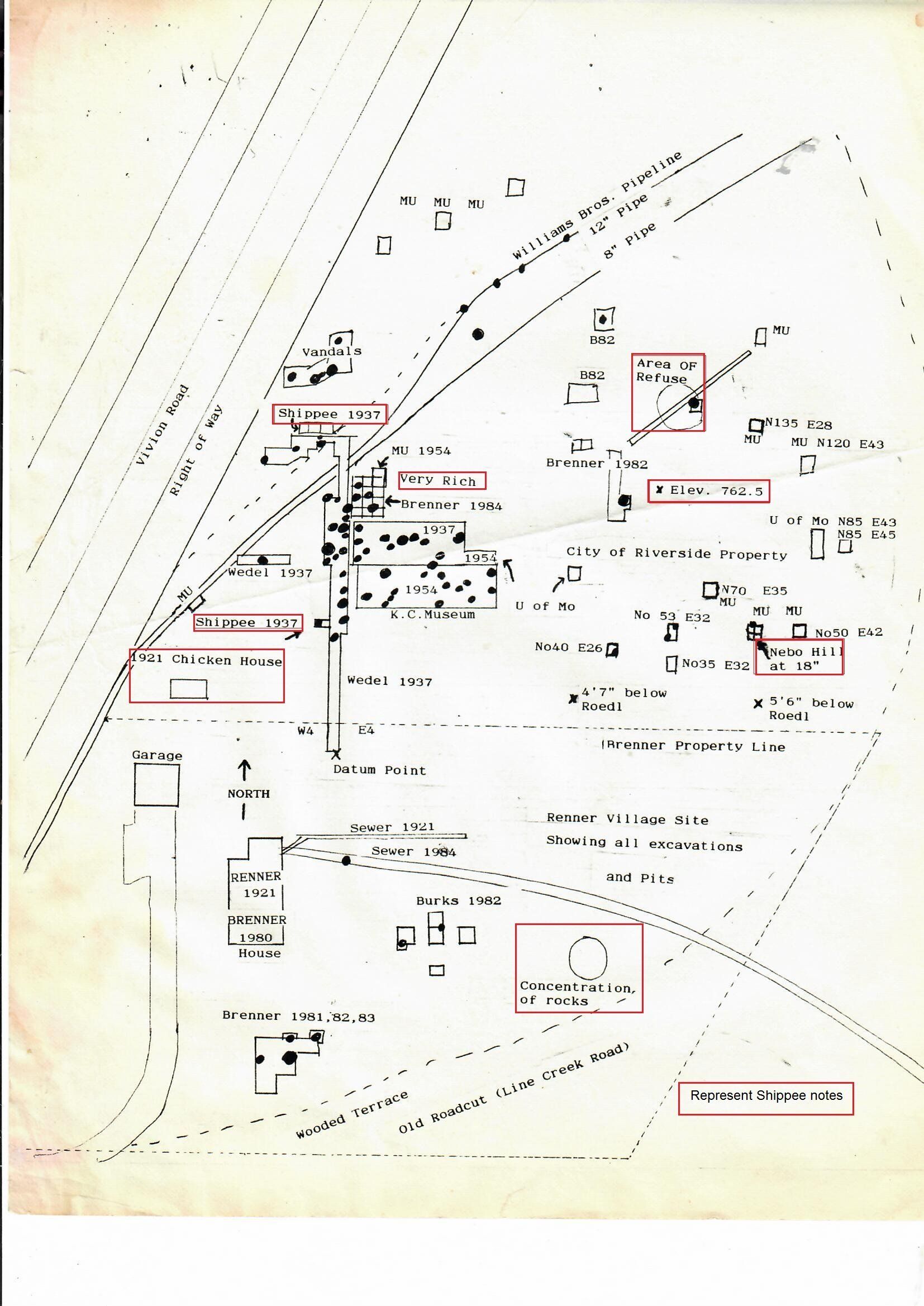
Shippee revisits the Renner Site in 1980
The home of Gary Brenner from 1980 to 1994
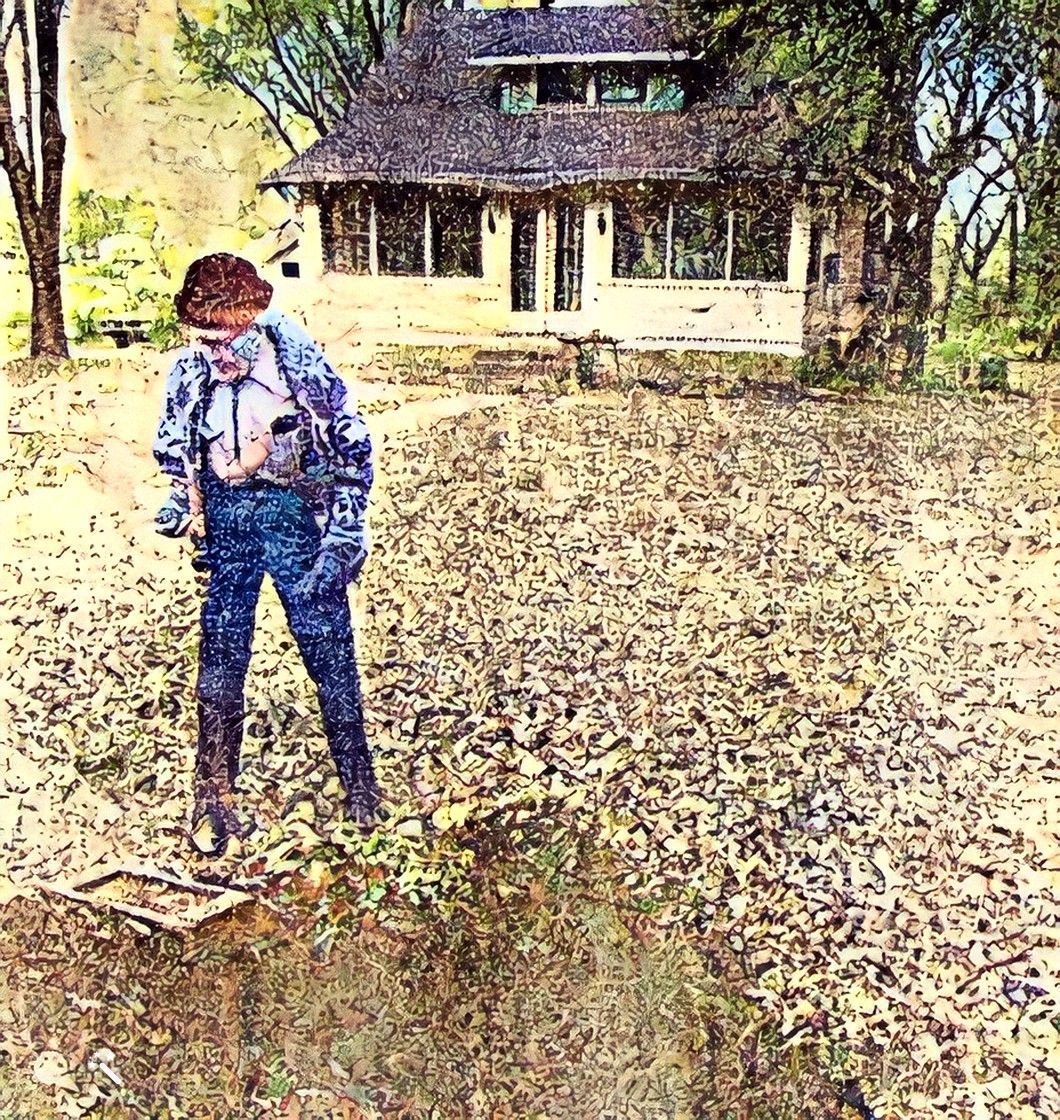
Shippee's last visit to the site before being confined to a wheelchair (1982).
He is standing over the area Wedel excavated 45 years earlier (1937.



